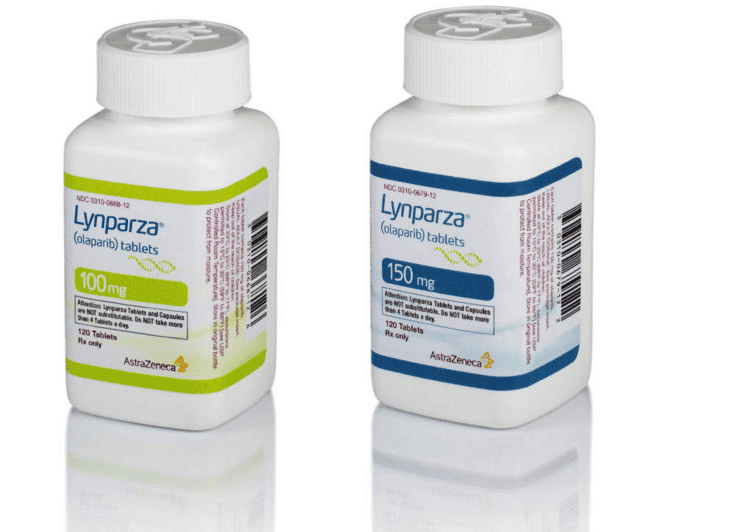
AstraZeneca and its marketing partner MSD (known as Merck & Co in North America) have scored marketing authorisation in China for their PARP inhibitor Lynparza as a first-line therapy for ovarian cancer.
Lynparza (olaparib) will now be available as a first-line treatment for women in China with newly diagnosed advanced germline or somatic BRCA mutated ovarian, fallopian tube or primary peritoneal cancer who are in complete or partial response to first-line platinum-based chemotherapy.
Around 22% of ovarian cancer patients carry a BRCA mutation (15% germline and 7% somatic), which must be identified via a companion diagnostic death.
The approval is based on the results from AZ’s phase 3 SOLO-1 trial, which showed Lynparza reduced the risk of disease progression or death by 70% in these patients versus placebo following response to platinum-based chemotherapy.
According to AZ, this approval makes Lynparza the only PARP inhibitor approved in this setting in China. AZ/MSD also scored first-line approval for Lynparza in ovarian cancer from the European Medicines Agency back in June, as well as a getting a green light from the US in the same setting last year.

AstraZeneca’s Dave Fredrickson
“This approval marks a new era for women with BRCA-mutated advanced ovarian cancer in China, where the prevalence of BRCA mutations in advanced disease is higher than the international average,” said Dave Fredrickson (pictured above), executive vice president, oncology business unit at AZ.
“Currently, 70% of women relapse within three years of initial treatment, representing the highest reoccurrence rate among gynaecological cancers worldwide.
The progression-free survival benefit of Lynparza observed in SOLO-1 is a significant step towards helping these women achieve long-term remission,” he added.
This approval in China, which is emerging as one of the fastest growing pharmaceutical markets in the world, consolidates Lynparza’s position as the runaway leader among PARP inhibitor treatments.
It is also one of AZ’s star performers – in its third-quarter financial results the drugmaker reported an impressive 98% growth of the drug to $847m, driven by an 86% increase in the US and a 227% increase in emerging markets. EvaluatePharma has projected that the Lynparza will continue to grow to produce annual revenues of $2.2bn by 2024.
Although Lynparza has been the lead in the PARP inhibitor category since AZ and Merck began co-developing the drug in 2017, it is facing increasing competition from the likes of GlaxoSmithKline.
GSK’s rival drug Zejula (niraparib) is also closing in on the first-line ovarian cancer setting – it recently presented positive findings in this indication at the European Society of Medical Oncology (ESMO).
Results from its PRIMA phase 3 study of Zejula demonstrated a 38% reduction in the risk of disease progression or death in women with ovarian cancer, regardless of tumour mutation type.
GSK could carve out a corner of the market on the strength of this data, but it is still unlikely to make much headway on Lynparza, which overwhelmingly dominates in the area. With this additional approval in China, AZ will likely see the PARP inhibitor grow to an even more solidified blockbuster status.
However, AZ and MSD are not resting on their laurels just yet, as they are also exploring the use of Lynparza in combination with Avastin (bevacizumab) as a first-line maintenance therapy for women with newly-diagnosed advanced ovarian cancer, regardless of their biomarker status or surgical outcome.




